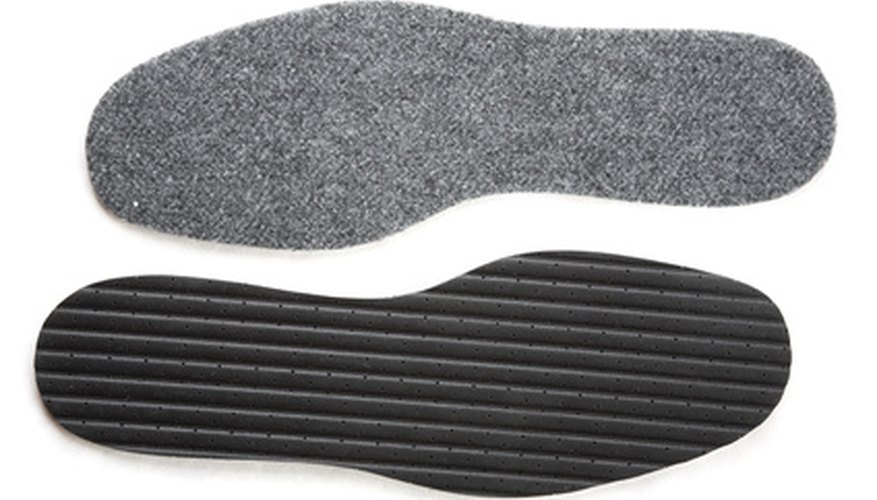Insoles are the bottom part of the inside of the shoe; they provide cushion and support for the sole of the foot. Sometimes with the wear and tear associated with wearing shoes, these insoles begin to come up and cause the shoe to fall apart or just become difficult or uncomfortable to wear. A number of different glues can be used to lock insoles in place.
Shoe Goo
Shoe Goo is a glue used specifically for repairs on shoes, and works on both the interior and exterior of the shoe. It is made to secure loose or torn parts of the shoe, especially insoles. This glue will stick just about any two surfaces together, ranging from rubber to cloth to leather. Shoe Goo is waterproof as well, so if the shoe is immersed in water, the glue will not dissolve and release the insole. Shoe Goo is sold in 105gr and 28.4gr tubes at many hardware stores. It can also be ordered online.
- Shoe Goo is a glue used specifically for repairs on shoes, and works on both the interior and exterior of the shoe.
- Shoe Goo is waterproof as well, so if the shoe is immersed in water, the glue will not dissolve and release the insole.
Barge All-Purpose Rubber Cement
Barge All-Purpose Rubber Cement will effectively attach insoles to the bottom of a shoe. This rubber cement is long lasting and bonds to just about anything, ranging from plastics to rubbers to leathers to cork to cloth materials. It is easily spreadable and will not freeze or melt even under extreme temperatures. The glue is also waterproof, so that direct contact with water or excessive amounts of moisture will not cause insoles to become loose. Barge all-purpose cement can be bought in small two-ounce tubes in hardware stores or online.
- Barge All-Purpose Rubber Cement will effectively attach insoles to the bottom of a shoe.
- The glue is also waterproof, so that direct contact with water or excessive amounts of moisture will not cause insoles to become loose.
Chemical Vulcanizing Cement
Chemical vulcanising cement is used to glue parts of rubber car tires together to temporarily patch them so that they can still be driven from place to place. This incredibly strong glue can also reattach insoles to the bottoms of shoes, though it's best if the bottom of the insole is rubber and the bottom of the shoe is rubber, as the glue is meant primarily for rubber surfaces. That said, it can work with most surfaces inside the bottom of a shoe. It is also made to resist heat, cold, water and wear and tear as it is meant for a surface that undergoes much more strain than a person's foot.
- Chemical vulcanising cement is used to glue parts of rubber car tires together to temporarily patch them so that they can still be driven from place to place.
- This incredibly strong glue can also reattach insoles to the bottoms of shoes, though it's best if the bottom of the insole is rubber and the bottom of the shoe is rubber, as the glue is meant primarily for rubber surfaces.
